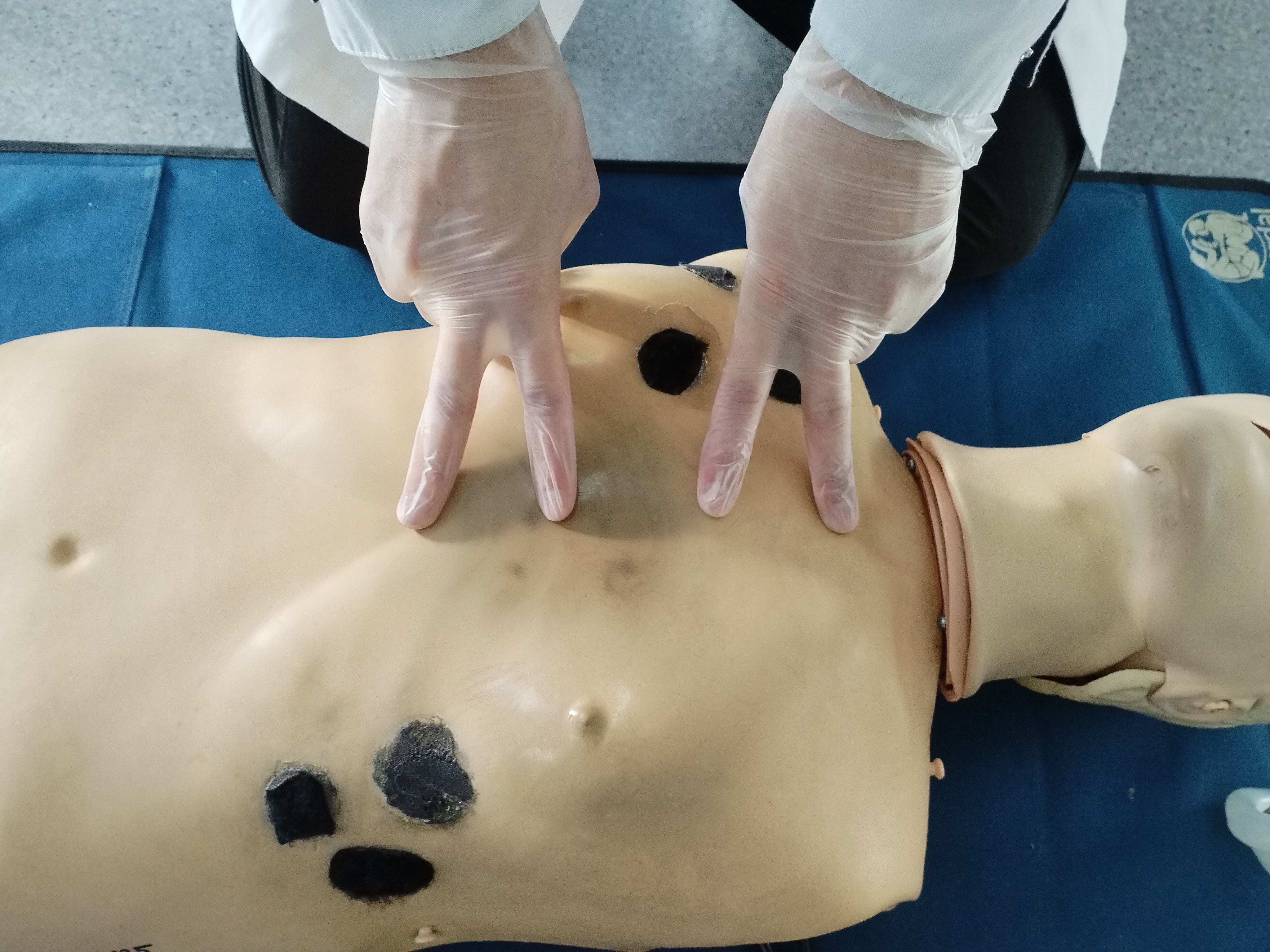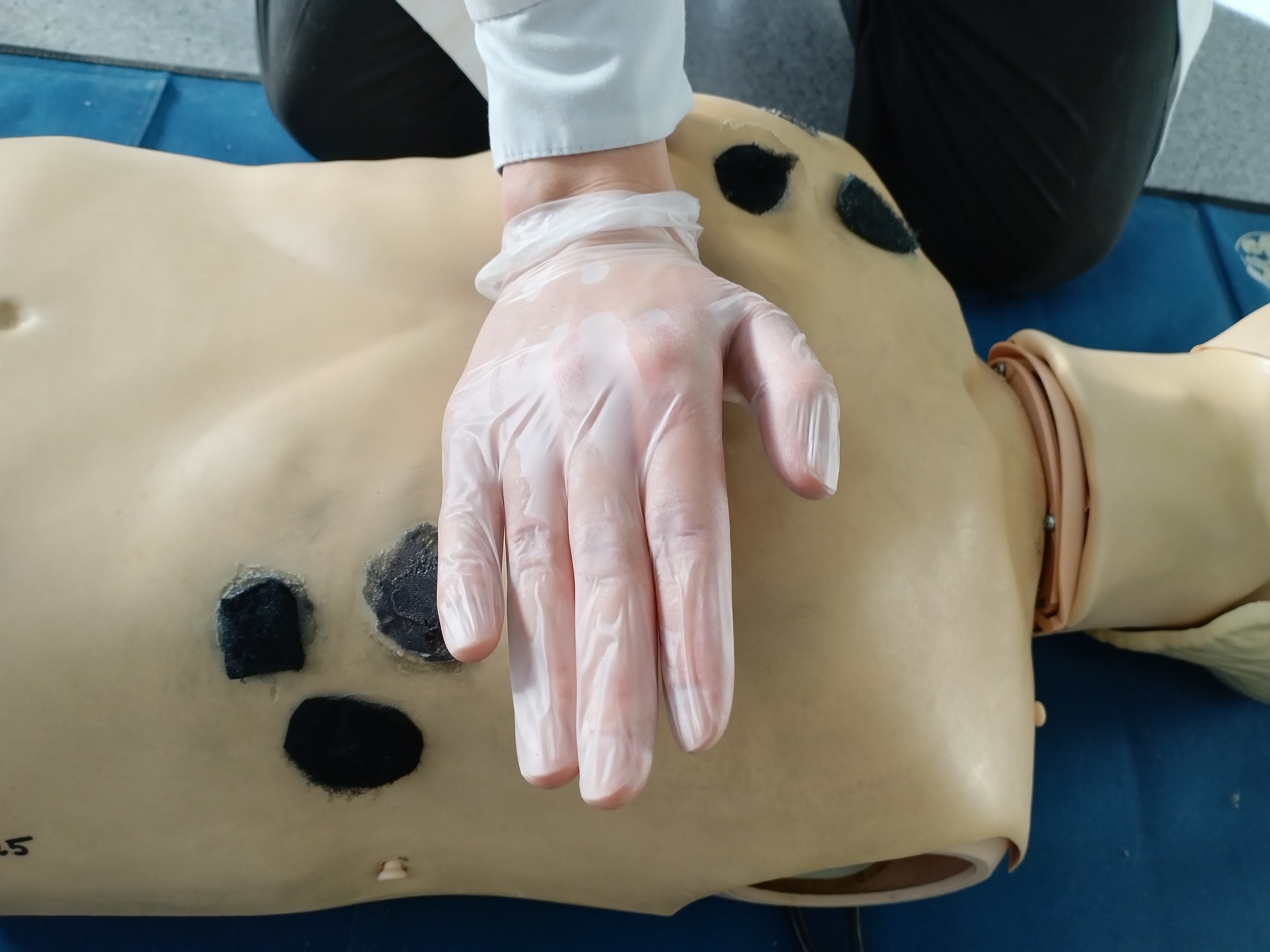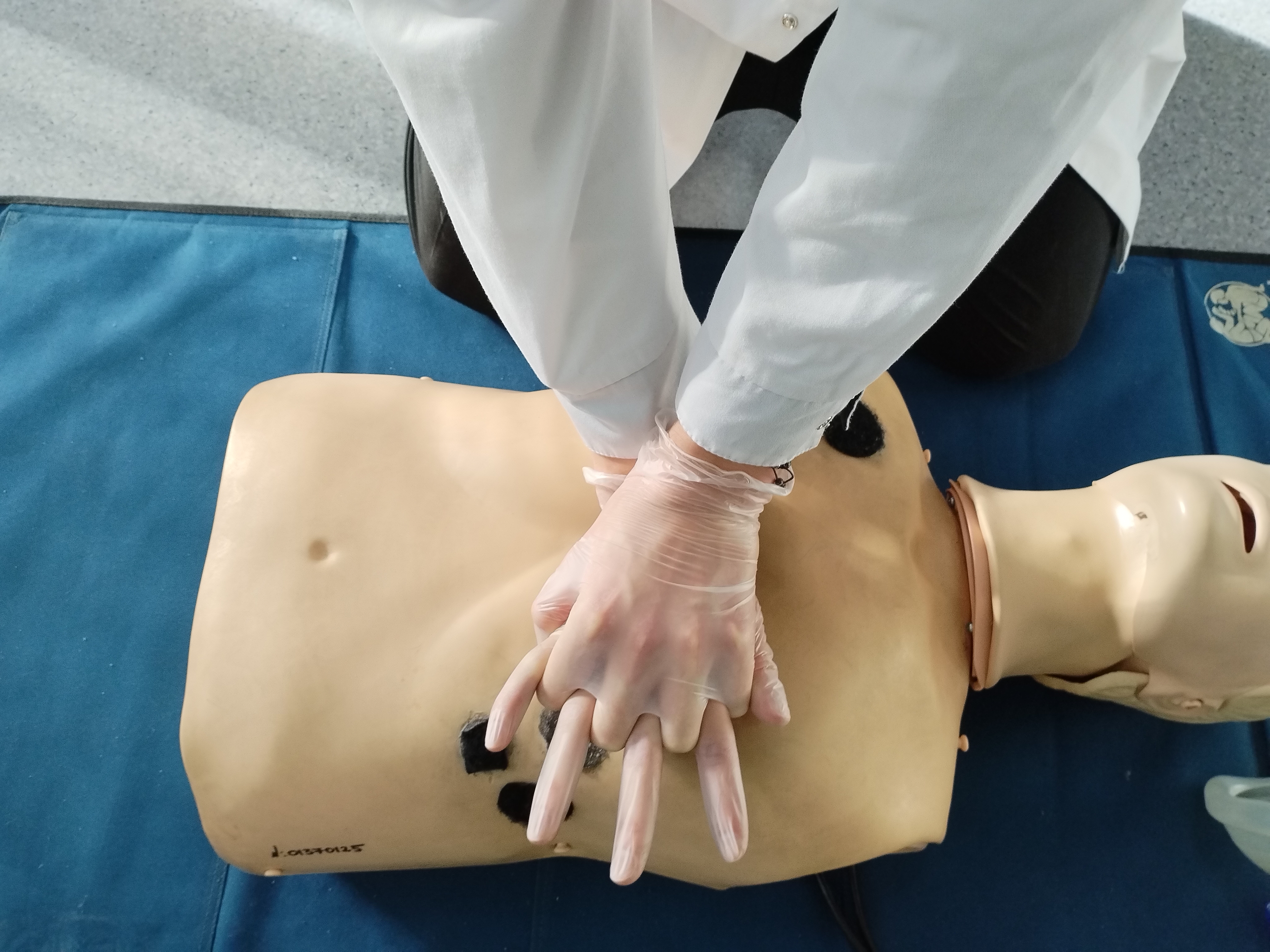Chest compression (CPR)
Authors: Rednenko V.V., Poplavets E.V.
Editor: Rednenko V.V.
Equipment for the practical skill:
- protective medical gloves;
- СPR simulator.
Clinical situation:
While at the train station, you heard a call for help. As you approached the scene, you found a group of people surrounding a woman (appearing to be about 60 years old) lying on the floor. There are no visible damages. To your question “What happened?”, the witnesses told you that the woman was sitting and suddenly fell from the bench..
Order of the skill performance:
- Conduct a primary examination (see skill Examination of an accident scene)
- Place the person face-up on a firm, flat surface.
- Position yourself at the side of the person on your knees, so as to ensure proper chest compressions.
- Free the chest area from clothing (especially if it has buttons or zippers).
- Determine the compression point on the sternum:
o place the second and third fingers of both hands in a V-shape from the jugular notch to the xiphoid process to divide the sternum into three equal parts;

o the compression point is the point between the lower and middle third of the sternum (the index finger of the hand located closer to the xiphoid process is located on it);
- Position your hand at the selected compression point so that:
o the center of the palm heel coincides with the selected point on the sternum;
o the palm was perpendicular to the midline of the sternum;
o the line of contact between the palm heel and the sternum coincided with the midline of the sternum.

o place the second hand on top of the lower hand in a position similar to the lower hand;
o interlace the fingers of both hands;
o pull your fingers upward until only the heels of your palm touch person’s sternum along the midline.

- Position your body so that your shoulders are directly over your hands (vertically) and keep your arms straight.

- Keeping your arms straight, push down using your body weight at a rate of 100-120 compressions per minute to a depth of at least 5 cm, but not more than 6 cm.
- After each compression, release all the pressure on the chest without losing contact between your hands and the sternum (let the chest completely return to its normal position).
- Maintain a smooth, steady down-and-up rhythm and do not pause between compressions.
- When performing CPR by cycle, including chest compressions and rescue breath in a ratio of 30:2, as you give compressions, count to 30. You can count out loud or silently. If you count silently, then say the count 28, 29, 30 out loud to orient the assistant giving the breathing.
- Continue compressions so that the pause, including the rescue breath, is no more than 10 s.
- After 4 cycles of 30 compressions and 2 breaths, stop and check for breath and pulse.